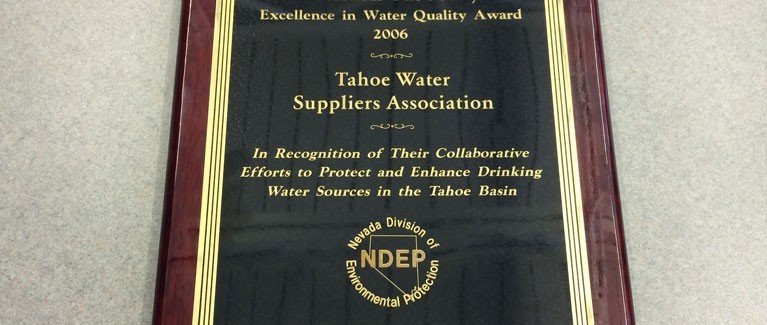TWSA History

Nevada members of TWSA first started working together during the state adoption of the 1986 amendments to the Safe Drinking Water Act (SDWA) and the creation of the Surface Water Treatment Rule (SWTR). Together, the Nevada purveyors were successful in including the following language in the Nevada state code, “Alternatively, for the systems at Lake Tahoe, the suppliers of water shall demonstrate that by location of the intake structure, that a level of protection equivalent of watershed control is provided.” This began a partnership now in its third decade.
The partnership adopted the essential elements of an integrated water management approach for high‐quality water source water not requiring filtration including: frequent monitoring, watershed controls, demonstrated history devoid of waterborne disease outbreaks, adequate storage in the event of higher turbidity excursions, and flexibility and redundancy in disinfection process (AWWA). The purveyors also completed the first of three sanitary surveys and control programs (1992) and pilot studies to determine trihalomethane formation potential and ozone disinfection design criteria. As a result, the Nevada State Board of Health granted five suppliers “filtration exemptions,” while one supplier (Round Hill) implemented filtration.
The Tahoe Water Suppliers Association (TWSA), formerly Nevada Tahoe Water Suppliers Association (NTWSA) changed its name in December 2005 with the addition of the first California water purveyor, North Tahoe Public Utility District. The 1992 plan, and subsequent updates, identified potential risks to source water quality including: sanitary sewer overflows, urban run‐off, development, and hygiene practices of summer boaters and visitors. The idea of forming an agency to deal with source water protection issues was presented in 1992; however, was not implemented until completion of the 2002 ten‐year update plan.
In 2002, with encouragement from Nevada State Health officials, six purveyors from the original partnership formed an association under a multi‐party agreement to address Federal and State source water protection regulations and fulfill recommendations of previous sanitary surveys. Appointed staff members from each agency foredm the TWSA board. The largest partner, IVGID, offered its Resource Conservationist as the association’s Executive Director. The agreement stipulates cost sharing of expenses incurred by IVGID on behalf of the association. Members pay an annual fee, in part proportional to the size of their service areas and in part, in equal amounts representing common administrative costs.